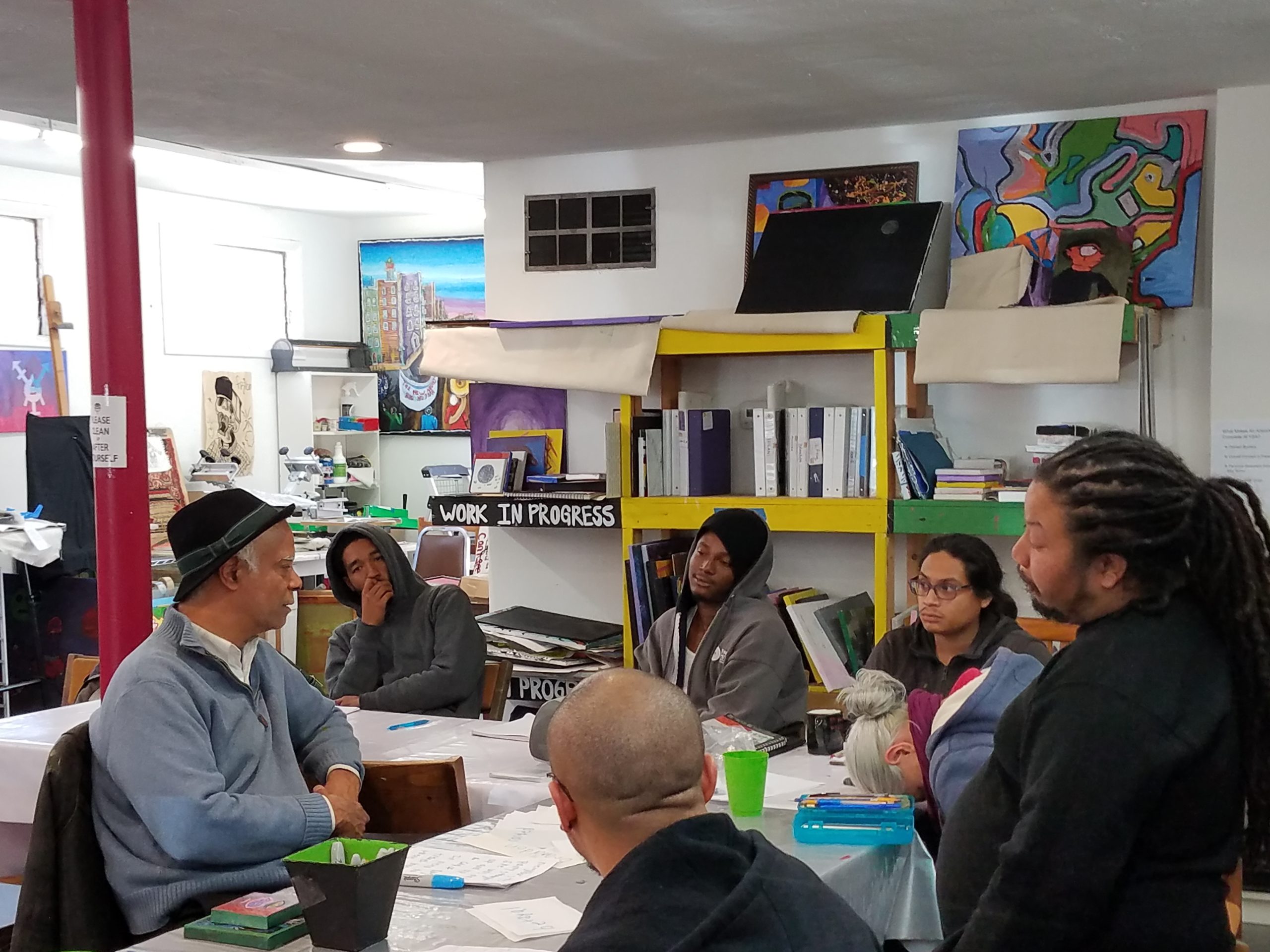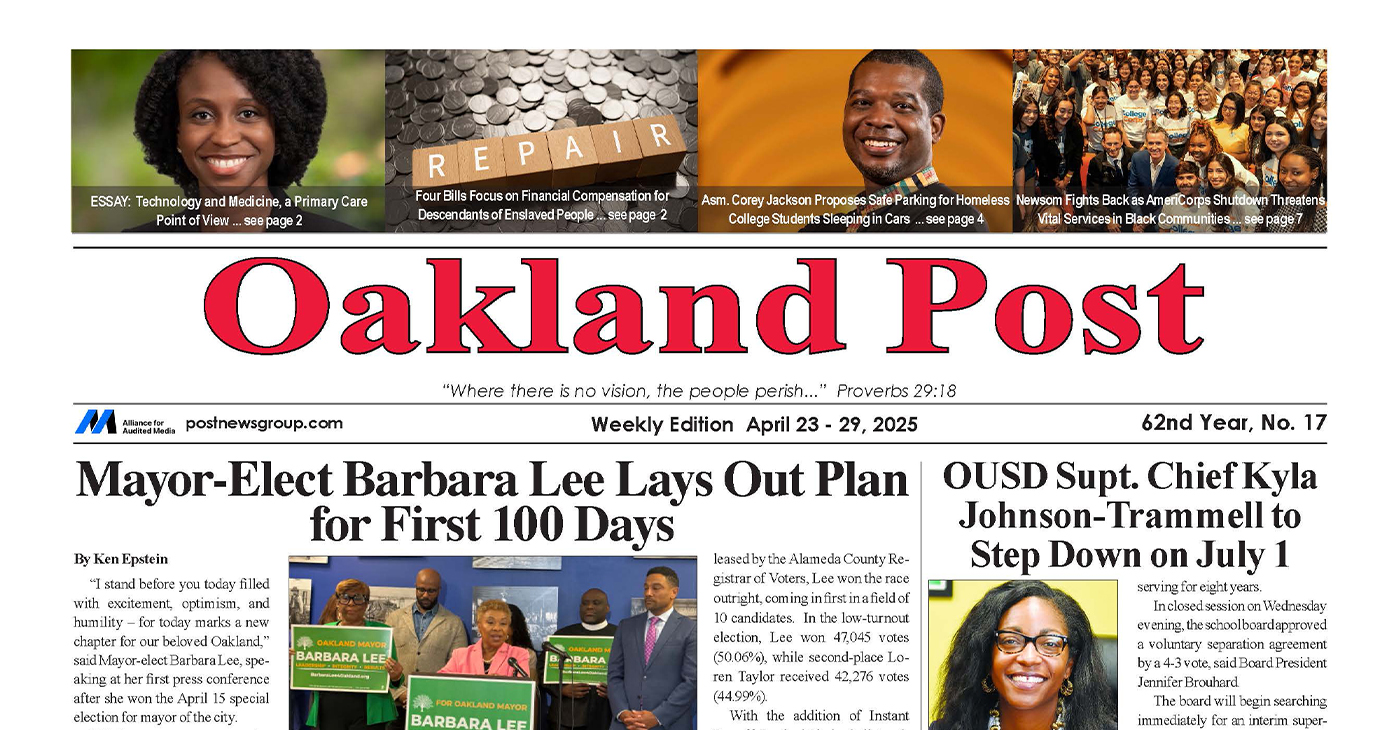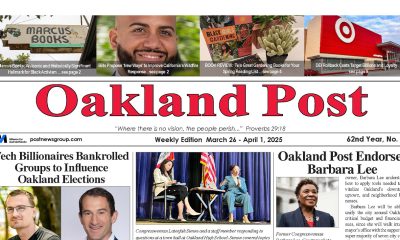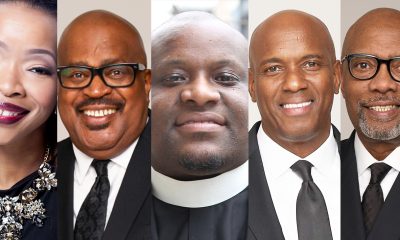Community
Youth Spirit Artworks Recruits Charles Blackwell

By Charles Blackwell
Alan Laird who once operated Expressions Art Gallery in downtown Oakland, and would also visit inmates on death row at San Quinten Prison in Marin County, had returned to Oakland for a visit from Miami. He requested me to go with him to Youth Spirit Artworks on Alcatraz in Berkeley. Alan had worked on some art projects in the past and introduced me to Sally, the director and Victor Hindman. After a few minutes of conversation with Victor, Alan and I were asked to conduct a session with the youth. We both agreed.
About 25-30 young people attended. Alan and I spoke about life. Not trying to paint a pretty picture, but being real with them. We went from A-Z, prison, politics, love, God, and life’s struggles. They were seriously listening, even telling us, “this isn’t the classroom at school, this is real.” Alan suggested I do a couple of poems and I did. Then towards the end some of the youth presented poems.
A few months later, Sally contacted me and the next thing I knew, I was recruited to conduct writing workshops at the agency. Soon I was doing writing workshops with young adults, homeless youth, and high school students. I was stunned to find out how many young people are homeless. One night Angel Perez, the art instructor, and I went to a shelter in Berkeley, trying to locate one of our clients. It was alarming the number of homeless people there.
One extremely gifted writer, Enera Wilson, who is homeless, writes:
CHARLES
It’s bizarre to believe,
that a man who could not see,
cleared my vision.
This man opened my eyes,
and allowed me to see things in a
different light.
Before encountering this young sanctuary
filled with much spirit and many works of
art,
I was deathly afraid of expressing the twisted
thoughts that came to me.
it’s unbelievable to think that a man who
cannot see,
allowed me to realize,
That I was talented beyond what I had ever
Imagined about myself.
I am thankful for the gift that he bestowed
Upon me.
I give thanks to the man whose name is
Charles.
At YSAW, I use creative writing to confront and convict some of the thoughts which youth today embrace. Its all in an attempt to create the looking glass self. We write about violence, fear, forgiveness, anger, hope, racial hatred, color and love. To move them away from the self-centered world to seeing others, with a concern for various issues; other than self.
After a writing exercise, we have discussions, sometimes provoking them to participate. No matter how intense the discussion, there’s always a note of comedy with Jason Powel Smith and his fried chicken poems:
I saw fried chicken
In somebody’s office And I went past Somebody offer
And I was like ummmmmm!
I always love me that
Friend Chicken
I’ve conducted writing workshops in prisons and I’ve worked with youth before. I can be very hard line, but this is different. Sometimes these youth really hit my heart. Some stories are about horrible situations with parents, family or circumstances they have no control over. Probably the best way to explain the impact of the YSAW Writing Workshop, maybe summed up in a poem unexpectedly presented in a workshop by Elias Gutierrez:
Crash! The thunder booms in the raging
wind blows me back as I am rushing
back at midnight. Phone dead, no money,
no food, no protection from the rain.
I pray, someone, anyone will let me in.
How can this world be so cold as to
take everything I was, am, and will be,
my future and my history away from
me. As I feel the freeze from my
bones and my fingertips, you cannot see
my tears through the bullet like rain
almost piercing my skin. I am not here
anymore, I do not exist.
Activism
Oakland Post: Week of April 23 – 29, 2025
The printed Weekly Edition of the Oakland Post: Week of April 23 – 29, 2025

To enlarge your view of this issue, use the slider, magnifying glass icon or full page icon in the lower right corner of the browser window.
#NNPA BlackPress
Chavis and Bryant Lead Charge as Target Boycott Grows
BLACKPRESSUSA NEWSWIRE — Surrounded by civil rights leaders, economists, educators, and activists, Bryant declared the Black community’s power to hold corporations accountable for broken promises.

By Stacy M. Brown
BlackPressUSA.com Senior National Correspondent
Calling for continued economic action and community solidarity, Dr. Jamal H. Bryant launched the second phase of the national boycott against retail giant Target this week at New Birth Missionary Baptist Church in Atlanta. Surrounded by civil rights leaders, economists, educators, and activists, Bryant declared the Black community’s power to hold corporations accountable for broken promises. “They said they were going to invest in Black communities. They said it — not us,” Bryant told the packed sanctuary. “Now they want to break those promises quietly. That ends tonight.” The town hall marked the conclusion of Bryant’s 40-day “Target fast,” initiated on March 3 after Target pulled back its Diversity, Equity, and Inclusion (DEI) commitments. Among those was a public pledge to spend $2 billion with Black-owned businesses by 2025—a pledge Bryant said was made voluntarily in the wake of George Floyd’s murder in 2020.“No company would dare do to the Jewish or Asian communities what they’ve done to us,” Bryant said. “They think they can get away with it. But not this time.”
The evening featured voices from national movements, including civil rights icon and National Newspaper Publishers Association (NNPA) President & CEO Dr. Benjamin F. Chavis Jr., who reinforced the need for sustained consciousness and collective media engagement. The NNPA is the trade association of the 250 African American newspapers and media companies known as The Black Press of America. “On the front page of all of our papers this week will be the announcement that the boycott continues all over the United States,” said Chavis. “I would hope that everyone would subscribe to a Black newspaper, a Black-owned newspaper, subscribe to an economic development program — because the consciousness that we need has to be constantly fed.” Chavis warned against the bombardment of negativity and urged the community to stay engaged beyond single events. “You can come to an event and get that consciousness and then lose it tomorrow,” he said. “We’re bombarded with all of the disgust and hopelessness. But I believe that starting tonight, going forward, we should be more conscious about how we help one another.”
He added, “We can attain and gain a lot more ground even during this period if we turn to each other rather than turning on each other.” Other speakers included Tamika Mallory, Dr. David Johns, Dr. Rashad Richey, educator Dr. Karri Bryant, and U.S. Black Chambers President Ron Busby. Each speaker echoed Bryant’s demand that economic protests be paired with reinvestment in Black businesses and communities. “We are the moral consciousness of this country,” Bryant said. “When we move, the whole nation moves.” Sixteen-year-old William Moore Jr., the youngest attendee, captured the crowd with a challenge to reach younger generations through social media and direct engagement. “If we want to grow this movement, we have to push this narrative in a way that connects,” he said.
Dr. Johns stressed reclaiming cultural identity and resisting systems designed to keep communities uninformed and divided. “We don’t need validation from corporations. We need to teach our children who they are and support each other with love,” he said. Busby directed attendees to platforms like ByBlack.us, a digital directory of over 150,000 Black-owned businesses, encouraging them to shift their dollars from corporations like Target to Black enterprises. Bryant closed by urging the audience to register at targetfast.org, which will soon be renamed to reflect the expanding boycott movement. “They played on our sympathies in 2020. But now we know better,” Bryant said. “And now, we move.”
#NNPA BlackPress
The Department of Education is Collecting Delinquent Student Loan Debt
BLACKPRESSUSA NEWSWIRE — the Department of Education will withhold money from tax refunds and Social Security benefits, garnish federal employee wages, and withhold federal pensions from people who have defaulted on their student loan debt.

By April Ryan
Trump Targets Wages for Forgiven Student Debt
The Department of Education, which the Trump administration is working to abolish, will now serve as the collection agency for delinquent student loan debt for 5.3 million people who the administration says are delinquent and owe at least a year’s worth of student loan payments. “It is a liability to taxpayers,” says White House Press Secretary Karoline Leavitt at Tuesday’s White House Press briefing. She also emphasized the student loan federal government portfolio is “worth nearly $1.6 trillion.” The Trump administration says borrowers must repay their loans, and those in “default will face involuntary collections.” Next month, the Department of Education will withhold money from tax refunds and Social Security benefits, garnish federal employee wages, and withhold federal pensions from people who have defaulted on their student loan debt. Leavitt says “we can not “kick the can down the road” any longer.”
Much of this delinquent debt is said to have resulted from the grace period the Biden administration gave for student loan repayment. The grace period initially was set for 12 months but extended into three years, ending September 30, 2024. The Trump administration will begin collecting the delinquent payments starting May 5. Dr. Walter M. Kimbrough, president of Talladega College, told Black Press USA, “We can have that conversation about people paying their loans as long as we talk about the broader income inequality. Put everything on the table, put it on the table, and we can have a conversation.” Kimbrough asserts, “The big picture is that Black people have a fraction of wealth of white so you’re… already starting with a gap and then when you look at higher education, for example, no one talks about Black G.I.’s that didn’t get the G.I. Bill. A lot of people go to school and build wealth for their family…Black people have a fraction of wealth, so you already start with a wide gap.”
According to the Education Data Initiative, https://educationdata.org/average-time-to-repay-student-loans It takes the average borrower 20 years to pay their student loan debt. It also highlights how some professional graduates take over 45 years to repay student loans. A high-profile example of the timeline of student loan repayment is the former president and former First Lady Barack and Michelle Obama, who paid off their student loans by 2005 while in their 40s. On a related note, then-president Joe Biden spent much time haggling with progressives and Democratic leaders like Senators Elizabeth Warren and Chuck Schumer on Capitol Hill about whether and how student loan forgiveness would even happen.
-

 Activism4 weeks ago
Activism4 weeks agoOakland Post Endorses Barbara Lee
-

 Activism4 weeks ago
Activism4 weeks agoOakland Post: Week of March 28 – April 1, 2025
-

 Activism3 weeks ago
Activism3 weeks agoOakland Post: Week of April 2 – 8, 2025
-

 #NNPA BlackPress3 weeks ago
#NNPA BlackPress3 weeks agoTrump Profits, Black America Pays the Price
-

 Activism2 weeks ago
Activism2 weeks agoOakland Post: Week of April 9 – 15, 2025
-

 #NNPA BlackPress3 weeks ago
#NNPA BlackPress3 weeks agoHarriet Tubman Scrubbed; DEI Dismantled
-

 #NNPA BlackPress3 weeks ago
#NNPA BlackPress3 weeks agoLawmakers Greenlight Reparations Study for Descendants of Enslaved Marylanders
-

 #NNPA BlackPress3 weeks ago
#NNPA BlackPress3 weeks agoTrump Targets a Slavery Removal from the National Museum of African-American History and Culture























































